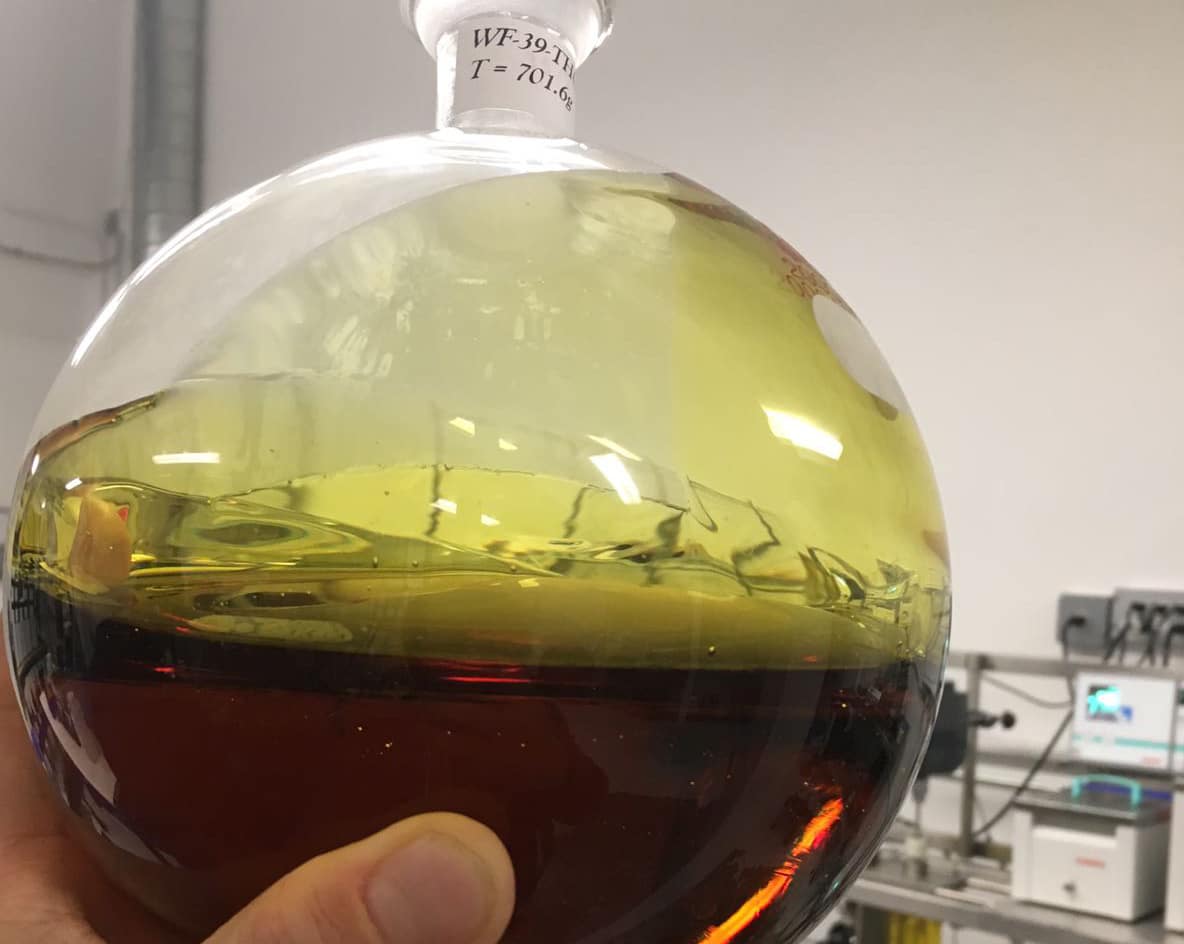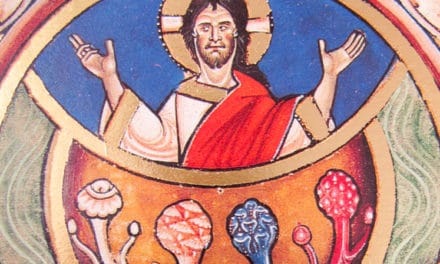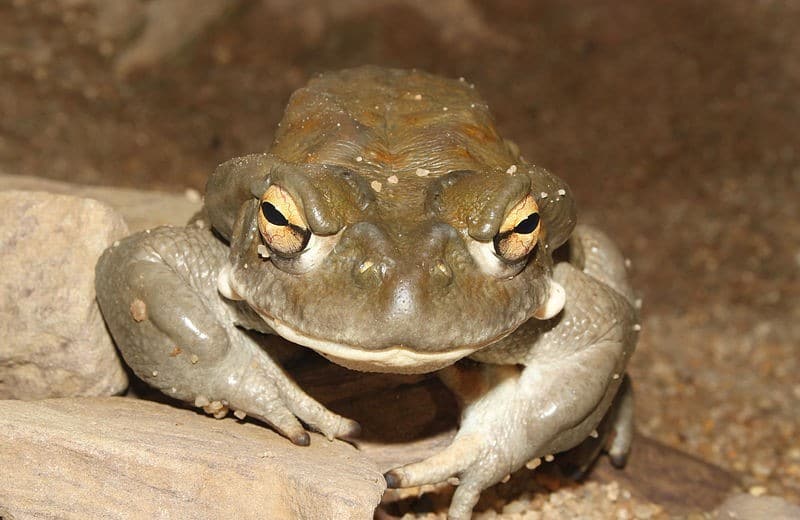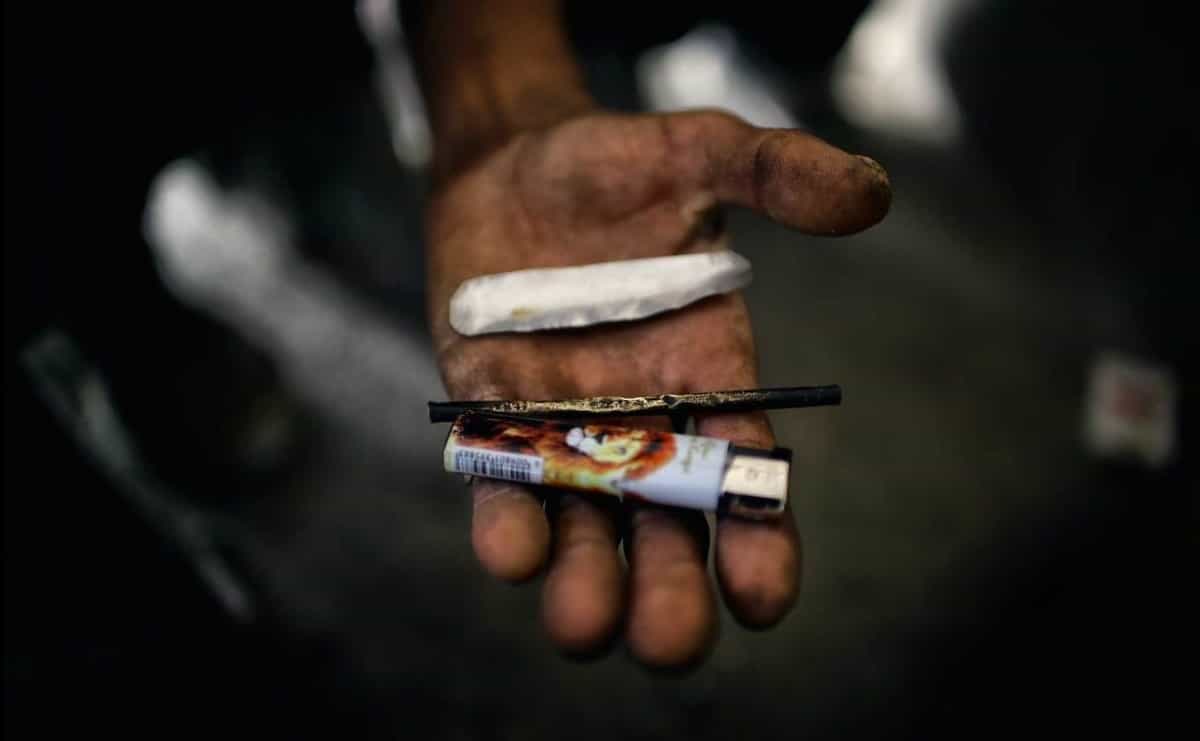
Image courtesy Temple of the Way of Light
Approaching ayahuasca for the first time can be a daunting task. While anecdotal accounts and emerging scientific studies abound about its incredible healing properties, there are also many cautionary tales out there when it comes to disingenuous shamans and questionable healing centers. Beyond that, a truly conscientious seeker will be aware of the impact that Western interest has had on the indigenous people that are the caretakers of this ancient healing tradition; they will want to avoid merely being an appropriator and consumer of the ayahuasca tradition and instead approach it in the most holistically respectful way possible. So how does one go about seeking the healing that ayahuasca offers while navigating this web of pitfalls?
Matthew Watherston is the founder of the Temple of the Way of Light, an ayahuasca retreat center in Peru, and two Peruvian non-profits—Alianza Arkana and The Chaikuni Institute—which work for environmental justice and human rights for the local people. We spoke with Matthew about his extensive experience on this subject in the hopes of discovering the essential things to look for when approaching ayahuasca for the first time.
Thank you for speaking with us on this important topic, Matthew. What advice would you give to someone from the U.S. who is called to ayahuasca for healing and wants their journey to be ethical and respectful to the local people and traditions?
Before I answer this question, I think it is important to paint a picture of the landscape of curanderismo in Peru. The first step to working ethically and respectfully with indigenous or mestizo healers is to find the right healer to work with.
Westerners often have ideological and romantic perspectives of indigenous healers and exaggerated expectations of their level of spiritual mastery. Local people call healers either curanderos (healers) or medicos (doctors). These are not self-realized masters or gurus. So, my advice is to take the same approach as if you were going to see a doctor. Be polite and respectful, but don’t give your power away or view them through rose-tinted glasses. As best you can, do your research beforehand to seek a healer with a solid, long-term reputation. Genuine healers are masters of plant medicine who could be considered shamanic equivalents to highly skilled surgeons in the West. However, they are actually very difficult to find, especially if you do not have extensive experience or reliable connections in the Amazon.
Some of the stories that I’ve heard from you and others really drive that point home— good shamans are hard to find and doing ceremony with an ill-intentioned shaman sounds horrifying.
As per my initial experience in the Amazon, not all healers are well-intentioned. Most Westerners are not aware that the culture of curanderismo in Peru is tainted with a significant amount of exploitation and predation. It is a dualistic system where there are both curanderos (healers) and brujos (witchdoctors). In addition, many so-called curanderos have ‘dos caras,’ two faces, and paradoxically are able to both heal and harm.
Just as a knife can be used to prepare delicious food or to inflict brutal harm, it depends on the intentions of the person wielding the knife. Many Westerners do not believe in brujeria (witchcraft) although it is simply the other side of the ‘healing coin’ and very much a part of day-to-day life here in the Amazon. Some shamans can appear to come across as extremely friendly and full of smiles, singing words of ‘light and love’ in ceremony, yet be working with the intention to exploit you, with their main motivation being financial gain. Even worse are situations where so-called healers energetically manipulate women into inappropriate sexual activity. The most sinister end of the spectrum is brujeria, which very much exists in the Amazon. It is part and parcel of everyday reality down here. As much as there are abilities to heal, there are abilities to harm, too.
Local people will frequently employ curanderos to treat illness as well as brujos to inflict harm (dano) on others for a wide range of reasons: seeking revenge on cheating husbands, crooked business deals, and quarrelsome neighbors. This is the local culture and not something that is imposed only upon naïve and unsuspecting foreigners. Therefore, when a foreigner turns up seeking healing, for example, in Iquitos or travels out to forest communities, they are an easy target for predatory shaman who can effortlessly present themselves as healers and appear to be well-intentioned despite the fact that they have a hidden agenda being played out in energetic realms. There are also many pretense healers offering ayahuasca ceremonies around Iquitos. They can dress up in tribal clothing, serve ayahuasca, [and] sing songs in indigenous dialects, yet have absolutely no training or abilities to manage the ceremonial space and participant’s experiences.
It is extremely difficult to know the difference between a fake shaman, a genuinely benevolent curandero, and a malevolent brujo when you do not have comprehensive experience of working within the system of curanderismo. Finding a genuine healer in Peru can be like playing Russian roulette, and much caution should be taken when choosing with whom to drink the medicine.
Would you suggest seeking out and vetting a healing center rather than looking for an individual shaman?
One of the major benefits of choosing a well-established healing center is the ability to receive ayahuasca healing in a safe and responsible set and setting, which is critical to a positive experience. If, led by romantic aspirations, you take the risk of finding an ancient shaman in a far-flung community or simply flying into Iquitos and feeling out the first ‘shaman’ that you encounter, then you need to understand the potentially dire consequences involved.
In ethical terms, look for centers for that are actively involved with outreach programs supporting local people or the environment. Do they have a non-profit organization that they have established or support? Is there a proven history of reciprocity through supporting the healers, their families, their communities, indigenous groups, or any level of environmental or social work? Do they detail the ways that they work in terms of social and ethical responsibility? Look at centers also that are actively focused on ensuring that they care for and limit their footprint on the land around them. Consider centers that are also actively involved in permaculture, reforestation, regenerative development, and sustainable building.
On a more practical level, always ask any center you may be considering if they are an officially registered organization with a license to operate. There are many illegal, unregistered, and unlicensed lodges in Peru. Ask them about their safety policies. Do they have any insurance covering accidents and medical emergencies? What level of experience do their facilitators have? How many years have they personally worked with ayahuasca, have they carried out dietas, and do they have any other training in psychotherapy, Eastern psycho-spiritual practices, etc? Check out the level of medical and psychological screening that they offer during the booking process and ensure that they have a solid emergency plan in case of serious health incidents. Also ask about aftercare and if they offer therapeutic integration support post retreat.
These are questions that typically indicate the level of care, responsibility, and professionalism of a center. It is important to understand that larger centers have developed solid reputations due to these levels of professionalism and safety; therefore, they have higher operating expenses which are reflected in the retreat fees. Understand, however, that by offering these important aspects, larger centers are taking away many of the risk factors, enabling you to focus on your healing journey without having to overly worry about your personal safety. They will also provide varying levels of aftercare post retreat, which is as important as the treatment you will receive during the retreat.
In terms of having an ethical and respectful approach to local people and traditions, I would say that the key is following the 3 R’s—relationship, respect, and reciprocity.
Can you expand on those 3 R’s and their importance?
Relationship is the foundation of healing work with sacred plants, so from the beginning it is advisable to consider setting your intention to establish a relationship with ayahuasca. One of the biggest hurdles many people need to overcome is to be comfortable attempting to communicate with a plant! I will say that this not essential in the early stages—if you are a vehement skeptic, no one should be forcing you to believe anything you don’t want to—but over time, if you really want to work at a deep level with ayahuasca, it is necessary. As discussed previously, from an indigenous perspective, plants have spirits and are intelligent. If you are coming to ayahuasca and asking for healing, it is wise to earnestly approach the plant and share your heartfelt intentions; why you are sitting before it, what are you looking to change in your life, and respectfully request healing and guidance.
In developing a relationship with the healers, I would advise you firstly to be yourself. Be open, be honest and don’t attempt to ‘put a brave face’ on if you have come to heal emotionally painful issues. Approach them with respect, humility, and honesty. If you have worked with ayahuasca previously, say for example in the West without a genuine curandero or within non-traditional systems, please do not come with a ‘know it all’ attitude. The Shipibo are not boastful people and don’t appreciate others who are.
Outside of ceremony is the best time to talk with healers, as during the ceremony they need to be able to hold considerable concentration in their work and managing energies. Therefore, it is not respectful to insist upon lengthy discussions with healers during ceremonies. They also respect people who really put the effort into their healing journey. When working with ayahuasca you will encounter difficulties, in and out of ceremony. They ask that guests, as much as possible, sit up when receiving ikaros and receive the sopladas at the end of the songs, typically blowing into the tips of the fingers and the crown.
One of the challenges for Westerners seeking healing in the Amazon is bridging the shamanic tradition with their own culture of origin. It is important to understand that indigenous healers are not psychotherapists. Although healing with ayahuasca is profoundly therapeutic, one mistake often made by guests is seeking psychological answers from the healers. While healers are happy to offer their advice, this is not their role or typically within their capability. In addition, it’s important to remember that Amazonian healers operate from a considerably different worldview and culture to us, as westerners, and the answers we seek may well be lost in translation. Their work is primarily with energy, and they do not generally provide much verbal guidance in terms of navigating through difficult emotions.
However, all the Temple’s facilitators are able to provide a vital bridge between these different worldviews, as well as being able to relate to guests’ emotional issues. They come from the same Western environment and have often faced similar issues. Although they are not healers (but may be apprentices), effective facilitators have many years of personal experience working with ayahuasca, the Shipibo cosmovision, and walk their talk. Through having faced and integrated their own traumas, they are able to share their personal experiences to help guide others through the same process. Without facilitators who have been through many years of overcoming personal challenges, the more serious healing cases would sometimes not have sufficient ‘therapeutic’ one-on-one support during the process.
Finally, some people perceive Amazonian healers as ‘enlightened beings.’ They are not. There are no gurus in this system, and there should be no preaching in true ayahuasca shamanism, only sharing and teaching. True Amazonian healers are highly skilled doctors working with plant spirits and experts in moving energies, but they are not fully realized and awakened spiritual masters. The approach of the Temple is always to gently guide our guests to find their own answers from within, not from the healers or facilitators.
That makes a lot of sense. So how about after an ayahuasca experience? How can someone give back and show respect to the ayahuasca tradition after their first ceremony?
According to indigenous wisdom traditions across the planet, sharing is the key to maintaining a healthy, balanced life for all. I strongly recommend that people come to work with ayahuasca with a clear understanding of the crucial importance of reciprocity. Reciprocity enables us to complete the varying phases of healing that we pass through in life. Without reciprocity, there is no rebirthing cycle. Healing is a process of consciously allowing aspects of pain in our past to die. We are then reborn. Reciprocity is the thread that runs throughout this rebirthing process.
By reciprocating all the benefits that come to you from others, nature, and the spirit world, you become more benevolent. By having respect for others and understanding their needs, your journey of healing and self-discovery is supported significantly more by the spirits of the plants and transpersonal forces outside of our comprehension.
The Q’ero people of the Peruvian Andes have a particularly deep understanding of reciprocity. They call it ayni, meaning to give back what they see as circulating energy, goods, knowledge, and labor for the benefit of family, society, and culture. The underlying principle of ayni is a profound respect for life. When we return the good that we receive, living with deep appreciation for all aspects of our life, benevolence manifests in its highest form. Ayni runs deeper than mutual respect and helping others. It defines a conscious and willing affirmation of the interrelation between humans and the natural world that sustains us.
It fosters the exchange of loving-kindness, wisdom, and beneficent actions between individuals, the environment, the elements, the spirits of nature, and transcendent forces beyond our comprehension. Ayni inspires us to support each other: I will help you today, and tomorrow you may help me. The purpose of reciprocity is to ensure the maintenance of all life and is a critical aspect of the daily life for the Q’ero people.
With ayni perpetually underlying our thoughts and deeds, we are able to tap in more easily to the sacred matrix of life; the mysterious, sentient, and benevolent ordering principle that exists just beyond the surface of normal consciousness. One of the ways this higher consciousness reveals itself is through synchronicity.
I therefore highly recommend for anyone working with ayahuasca that they really try to hold ayni in their hearts and minds. Make an effort to give back, to pay it forwards, and to share in many different ways what you have gained. Ayahuasca often develops this golden rule and inspires a passion to take care of each other and our precious planet. This eco-spiritual healing philosophy is vital in these times of individual crisis, existential distress, and global environmental destruction.
Provided one is committed to the longer-term journey of integration, ayahuasca guides us over time through a process of moving from competition to cooperation and shifting from serving ourselves into service for others. Genuine healing initiates a process of remembering; returning to wholeness [and] knowing that there is a universal organizing principle and that everything is interconnected, including all the events in one’s life. That interconnectedness can be thought of as the energetic web that holds life together.
The Temple embodies this philosophy in all aspects of our work and enthusiastically gives back to the people and the environment that we are blessed to partner with here in the Amazon. In 2011 we founded Alianza Arkana, and in 2013 we founded The Chaikuni Institute, working in many different areas including environmental justice, human rights, regenerative development, and permaculture. We will be launching an exciting new project through The Chaikuni Institute this year, focused on sustainable ayahuasca and reforestation projects in local communities near the Temple.
We are deeply grateful to Matthew for sharing his insights on this nuanced subject and for his own incredible work in building ethical and reciprocal organizations in Peru.










